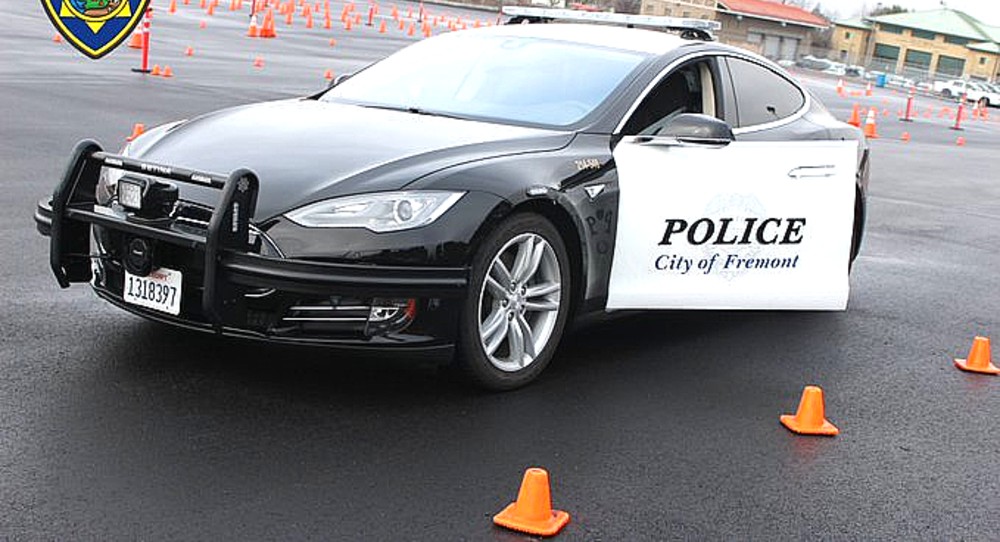
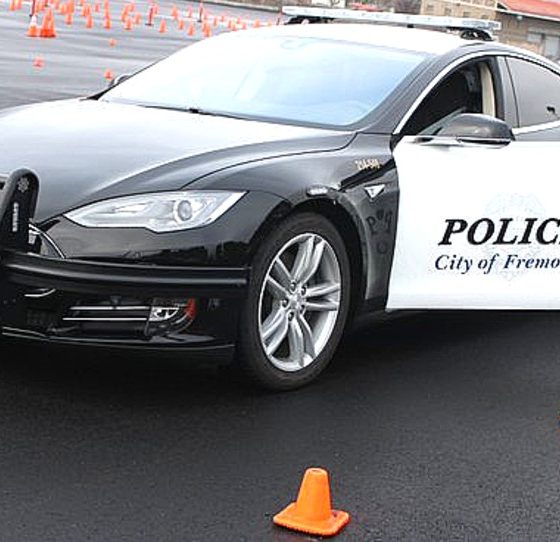
News
Tesla Model S police cruiser not to blame for mishap, says Fremont PD
The Fremont Police Department released a statement on Thursday evening clarifying reports that its Tesla Model S cruiser ran out of battery during a high-speed pursuit on Interstate 680.
On Monday, the Tesla Model S gained national attention as a journalist contacted the department requesting information regarding a high-speed chase from the Irvington District of Fremont, California to Washington Boulevard. The chase eventually ended up on Interstate 680, heading south toward San Jose, CA. The journalist released a portion of the police scanner recordings from the chase, where the officer driving the Model S told other units in the pursuit that he would have to abandon due to his battery running low.
However, the suspect then drove onto the shoulder of the interstate, passing a vehicle in an increasingly unsafe manner. The Sargeant of the Fremont PD then made the decision to halt the pursuit of the vehicle as it was becoming more of a public safety risk. All three police units disengaged the vehicle, and the chase was stopped after about 10 miles.
When the Sargeant made the announcement to stop pursuing the vehicle, the Tesla Police Cruiser was at a nearby charging station. The statement from the Fremont PD stated, “at no time did the battery of the Tesla become a factor in our ability to pursue the suspect or perform our duties. This situation, while embarrassing, is no different from cases where a patrol car runs low (or even dry) of fuel.”
Fremont’s statement noted that the journalist who released the initial story contacted the department with questions and subsequently published the article. It reached the national spotlight due to public interest. Fremont Police were sure to clarify the fact that the Tesla having to drop out of the chase could have happened to any vehicle and that they recommend each officer have at least half of a tank of gas or half a battery charge when they begin their shift. “While not policy, we recommend officers begin their shift with at least a half tank of gas or in this case, a battery charge of 50%. On this date, our officer driving the Tesla noted approximately 50% of battery life when he began his shift,” they said. The fact that the vehicle had to stop was in no way the fault of the Model S.
In fact, the department has been so pleased with their Tesla cruiser, they have already had initial talks about buying a second vehicle, most likely a Model X. “So far, the vehicle is performing extremely well, and has exceeded our expectations. We are already in initial conversations about testing a second vehicle, likely an SUV model, and we look forward to providing our initial results in the near future,” Captain Sean Washington said.
The Fremont PD stated that their Model S police cruiser has outperformed their expectations and they are extremely happy with its performance, as they have tracked the performance of the vehicle since its induction into the police force. “Over the last six months, data on range, performance, equipment, and other elements has been gathered by officers through its use as a patrol vehicle. During this time we have documented two police pursuits, where the vehicle met and exceeded expectations.”
Fremont is the location of the original Tesla Factory. The company bought the facility in 2010. Previously, it was the home of General Motors from 1962 to 1982 and eventually, Toyota also produced vehicles there. Tesla and Toyota worked conjunctively to work toward producing electric vehicles. Tesla officially opened the factory as its own on October 27, 2010.
Read the full statement from the Fremont Police Department below:
Our Department has unfortunately been in the news this week for an incident involving our electric police patrol vehicle (Tesla Model S). We first deployed the Tesla in March of this year as a fully outfitted patrol vehicle. Over the first six months, the performance feedback and initial data collection has been very positive and we are in early discussions of expanding the program. During a pursuit last Friday night, the battery charge began to run low, and we’d like the opportunity to clarify and provide additional context with regard to what occurred.
On Friday afternoon, a patrol officer checked out our Tesla patrol vehicle at the start of his shift and noticed the battery was half-charged. A typical battery at full charge ranges from 220-240 miles and during an 11 hour patrol shift, Fremont patrol officers drive approximately 70-90 miles. While not policy, we recommend officers begin their shift with at least a half tank of gas or in this case, a battery charge of 50%. On this date, our officer driving the Tesla noted approximately 50% of battery life when he began his shift. While the vehicle is routinely charged between shifts, on Friday the vehicle had just been returned from our Corporation Yard. The vehicle is regularly returning at the end of every shift with 40-60%, if not more, of the battery charge remaining.
Nine hours into the officer’s shift, at 11:05 p.m., he became involved in a vehicle pursuit that lasted a total of 8 minutes. The pursuit began in our Irvington District and traveled on Washington Blvd., before merging southbound onto I680 towards San Jose. Within minutes, two additional Fremont patrol units were behind the Tesla and in the pursuit. Additionally, the California Highway Patrol (CHP) was notified and responding. As standard protocol, once CHP has sufficient units, they take over our pursuits on the freeway.
The pursuit spanned approximately 10 miles and at times exceeded 110 mph. Regular updates regarding the speed, location, general traffic and roadway conditions were provided by the second officer in the pursuit. Just before the pursuit ended at 11:13 p.m., the officer driving the Tesla responsibly notified his cover units he was going to have to back out of the pursuit because his battery was running low. Just after they passed the Montague Expressway exit, the suspect drove on the left shoulder of the road to pass a vehicle. At that time, the Fremont Police Sergeant monitoring the pursuit gave orders to terminate to ensure public safety. All three units deactivated their emergency equipment and returned to normal driving conditions. At that point, the Tesla was driven to a nearby charging station and the additional Fremont units returned to the City. CHP located the unoccupied vehicle in the area of I680 and the Berryessa exit. At no time did the battery of the Tesla become a factor in our ability to pursue the suspect or perform our duties. This situation, while embarrassing, is no different from cases where a patrol car runs low (or even dry) of fuel.
In recent years police radio traffic has become readily accessible through phone applications and its common practice for news media and even community members to monitor and even record. On Monday, a local journalist contacted our Department requesting additional details regarding the pursuit. The journalist subsequently wrote an article and released a portion of our radio traffic. Since that time, the Department has received numerous media inquiries regarding the vehicle’s battery. Unfortunately, public interest in the original story propelled it into the national spotlight.
Over the last six months, data on range, performance, equipment, and other elements has been gathered by officers through its use as a patrol vehicle. During this time we have documented two police pursuits, where the vehicle met and exceeded expectations. Our final results and data will ultimately help us determine if the EV technology meets current patrolling applications and cost effectiveness. We remain dedicated to our continued research into the benefits of using electric vehicles and the effects they have on our environment. We hope to share our initial data and feedback soon.
Captain Sean Washington stated, “So far, the vehicle is performing extremely well, and has exceeded our expectations. We are already in initial conversations about testing a second vehicle, likely an SUV model, and we look forward to providing our initial results in the near future.”
For more information on our electric vehicle pilot program, visit www.fremontpolice.org/electricvehicle.

News
Tesla Model Y L is gaining momentum in China’s premium segment
This suggests that the addition of the Model Y L to Tesla China’s lineup will not result in a case of cannibalization, but a possible case of “premiumization” instead.
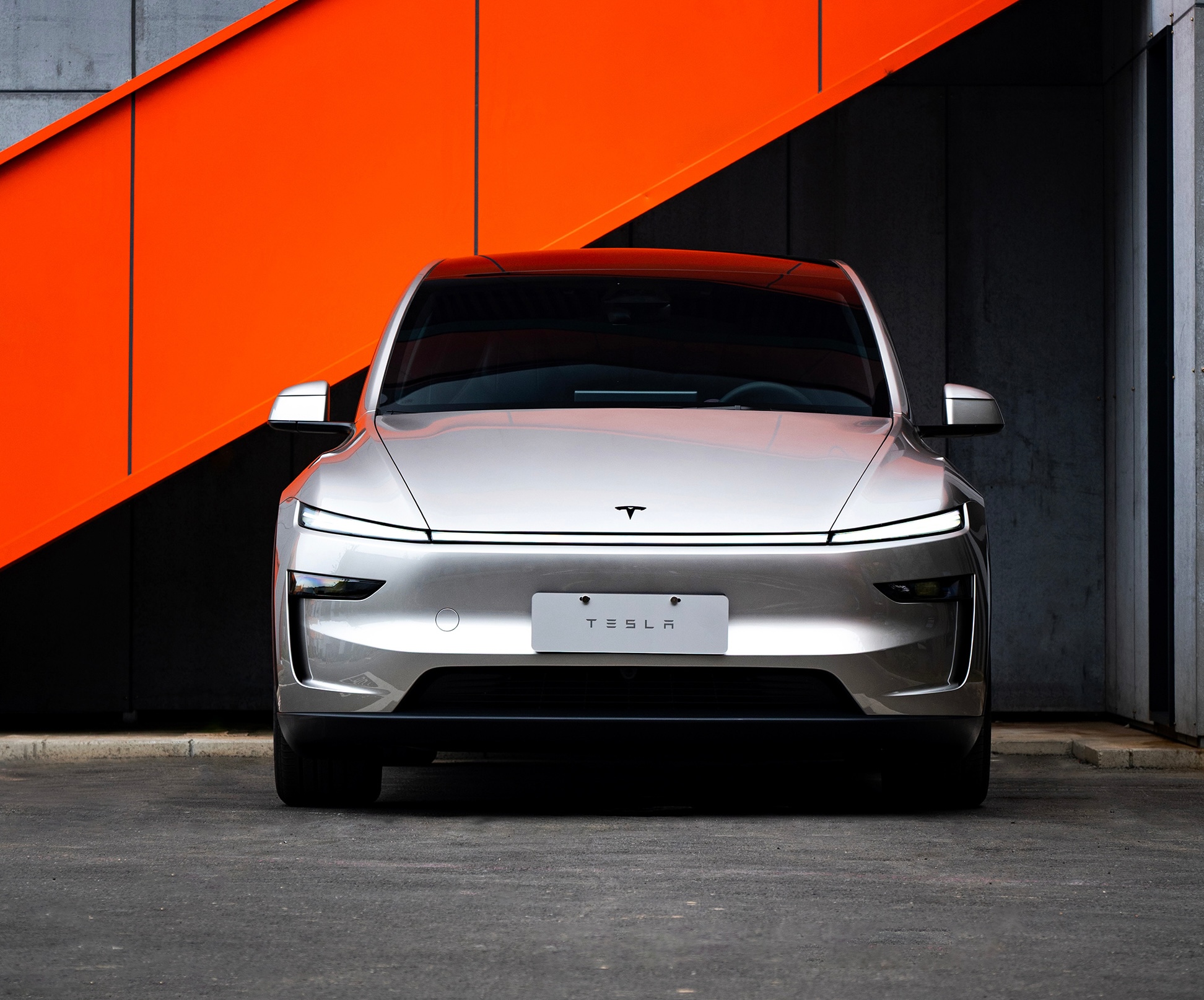
Tesla’s domestic sales in China held steady in November with around 73,000 units delivered, but a closer look at the Model Y L’s numbers hints at an emerging shift towards pricier variants that could very well be boosting average selling prices and margins.
This suggests that the addition of the Model Y L to Tesla China’s lineup will not result in a case of cannibalization, but a possible case of “premiumization” instead.
Tesla China’s November domestic numbers
Data from the a Passenger Car Association (CPCA) indicated that Tesla China saw domestic deliveries of about 73,000 vehicles in November 2025. This number included 34,000 standard Model Y units, 26,000 Model 3 units, and 13,000 Model Y L units, as per industry watchers.
This means that the Model Y L accounted for roughly 27% of Tesla China’s total Model Y sales, despite the variant carrying a ~28% premium over the base RWD Model Y that is estimated to have dominated last year’s mix.
As per industry watcher @TSLAFanMtl, this suggests that Tesla China’s sales have moved towards more premium variants this year. Thus, direct year-over-year sales comparisons might miss the bigger picture. This is true even for the regular Model Y, as another premium trim, the Long Range RWD variant, was also added to the lineup this 2025.
November 2025 momentum
While Tesla China’s overall sales this year have seen challenges, the Model Y and Model 3 have remained strong sellers in the country. This is especially impressive as the Model Y and Model 3 are premium-priced vehicles, and they compete in the world’s most competitive electric vehicle market. Tesla China is also yet to roll out the latest capabilities of FSD in China, which means that its vehicles in the country could not tap into their latest capabilities yet.
Aggregated results from November suggest that the Tesla Model Y took the crown as China’s #1 best-selling SUV during the month, with roughly 34,000 deliveries. With the Model Y L, this number is even higher. The Tesla Model 3 also had a stellar month, seeing 25,700 deliveries during November 2025.
Cybertruck
Tesla Cybertruck earns IIHS Top Safety Pick+ award
To commemorate the accolade, the official Cybertruck account celebrated the milestone on X.

The Tesla Cybertruck has achieved the Insurance Institute for Highway Safety’s (IIHS) highest honor, earning a Top Safety Pick+ rating for 2025 models built after April 2025.
The full-size electric pickup truck’s safety rating is partly due to the vehicle’s strong performance in updated crash tests, superior front crash prevention, and effective headlights, among other factors. To commemorate the accolade, the official Cybertruck account celebrated the milestone on X.
Cybertruck’s IIHS rating
As per the IIHS, beginning with 2025 Cybertruck models built after April 2025, changes were made to the front underbody structure and footwell to improve occupant safety in driver-side and passenger-side small overlap front crashes. The moderate overlap front test earned a good rating, and the updated side impact test also received stellar marks.
The Cybertruck’s front crash prevention earned a good rating in pedestrian scenarios, with the standard Collision Avoidance Assist avoiding collisions in day and night tests across child, adult crossing, and parallel paths. Headlights with high-beam assist compensated for limitations, contributing to the top award.
Safest and most autonomous pickup
The Cybertruck is one of only two full-size pickups to receive the IIHS’ Top Safety Pick + rating. It is also the only one equipped with advanced self-driving features via Tesla’s Full Self-Driving (Supervised) system. Thanks to FSD, the Cybertruck can navigate inner city streets and highways on its own with minimal supervision, adding a layer of safety beyond passive crash protection.
Community reactions poured in, with users praising the vehicle’s safety rating amidst skepticism from critics. Tesla itself highlighted this by starting its X post with a short clip of a Cybertruck critic who predicted that the vehicle will likely not pass safety tests. The only question now is, of course, if the vehicle’s Top Safety Pick+ rating from the IIHS will help the Cybertruck improve its sales.
News
Tesla stands to gain from Ford’s decision to ditch large EVs
Tesla is perhaps the biggest beneficiary of Ford’s decision, especially as it will no longer have to deal with the sole pure EV pickup that outsold it from time to time: the F-150 Lightning.
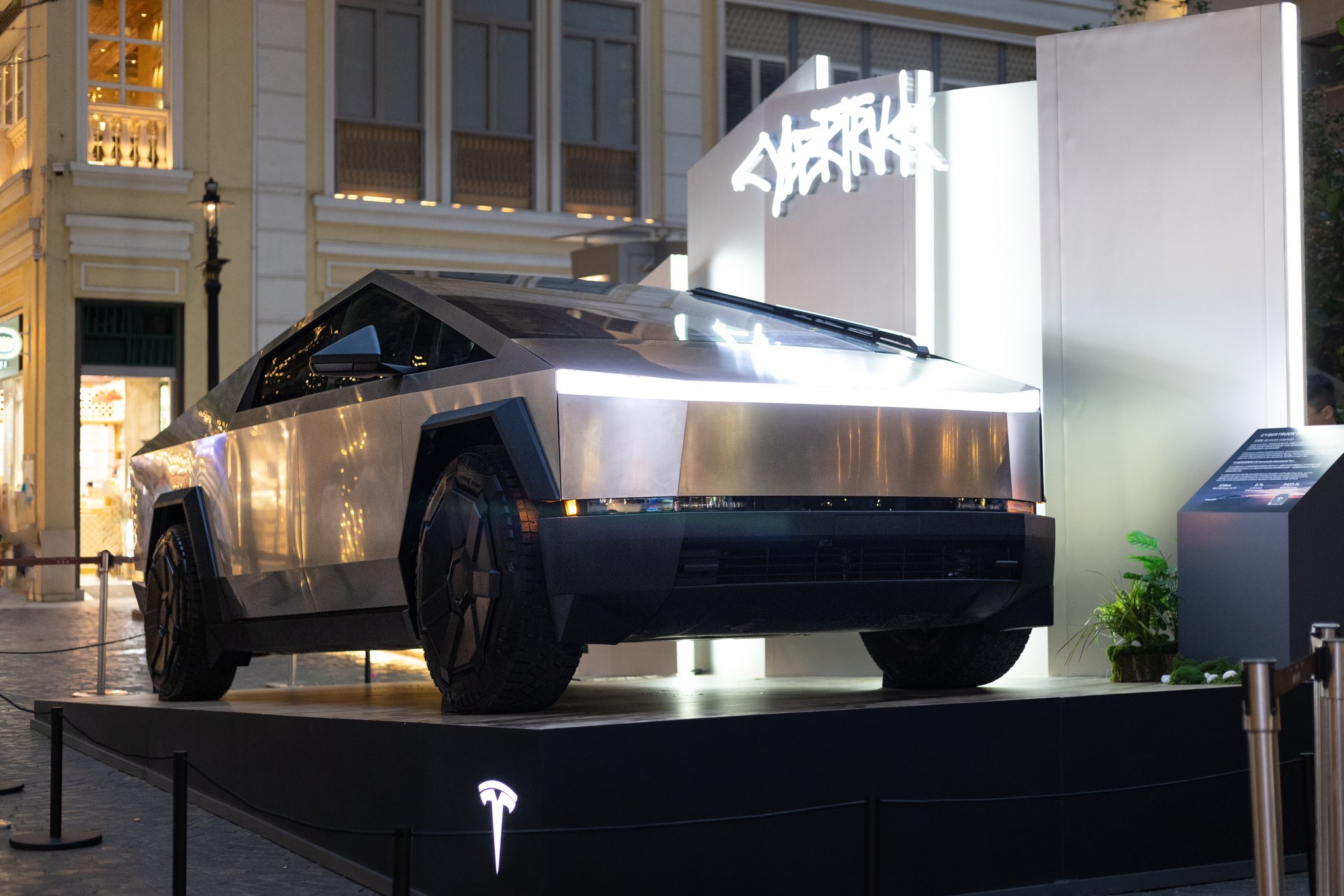
Ford’s recent decision to abandon production of the all-electric Ford F-150 Lightning after the 2025 model year should yield some advantages for Tesla.
The Detroit-based automaker’s pivot away from large EVs and toward hybrids and extended-range EVs that come with a gas generator is proof that sustainable powertrains are easy on paper, but hard in reality.
Tesla is perhaps the biggest beneficiary of Ford’s decision, especially as it will no longer have to deal with the sole pure EV pickup that outsold it from time to time: the F-150 Lightning.
Here’s why:
Reduced Competition in the Electric Pickup Segment
The F-150 Lightning was the Tesla Cybertruck’s primary and direct rival in the full-size electric pickup market in the United States. With Ford’s decision to end pure EV production of its best-selling truck’s electric version and shifting to hybrids/EREVs, the Cybertruck faces significantly less competition.
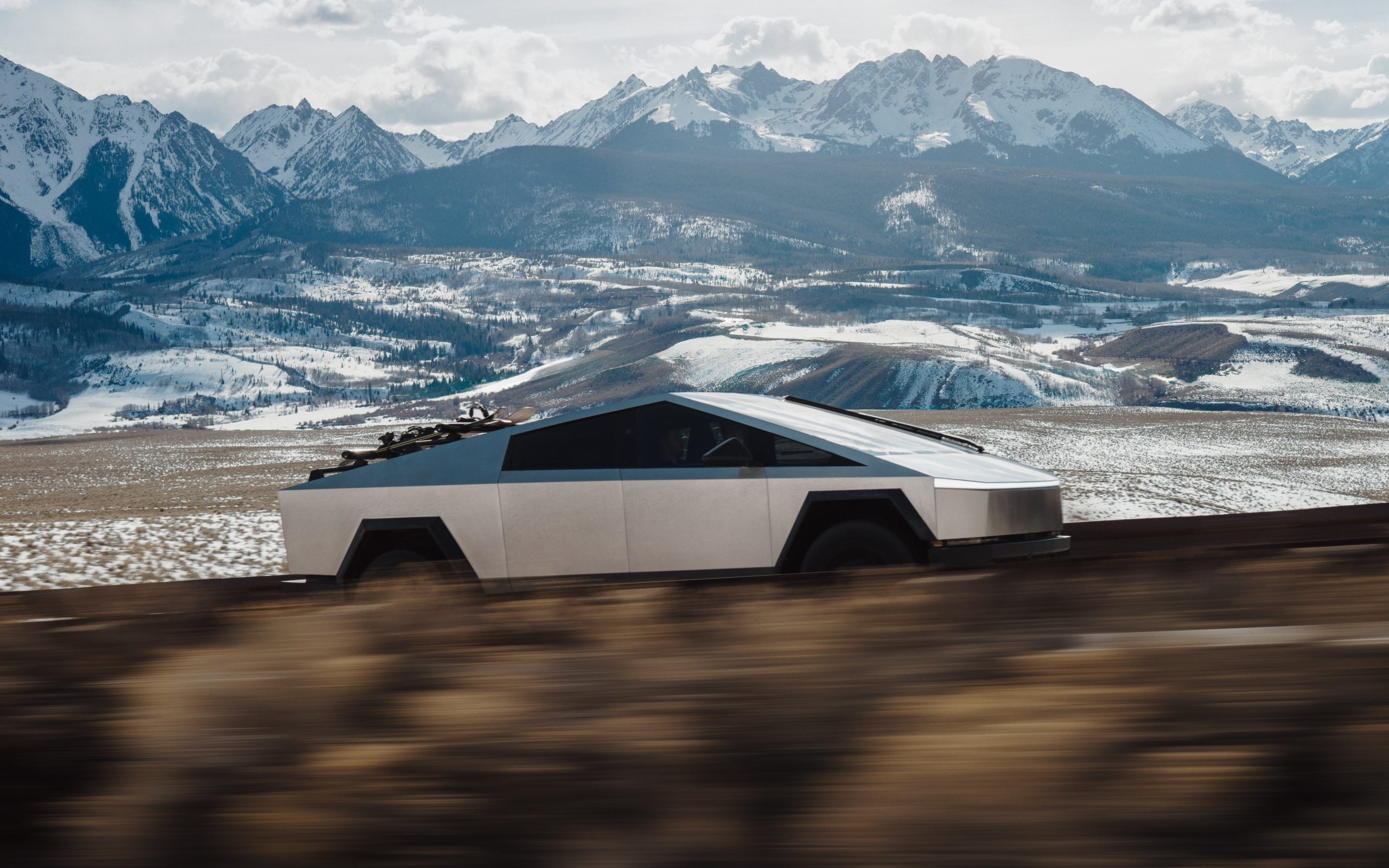
Credit: Tesla
This could drive more fleet and retail buyers toward the Cybertruck, especially those committed to fully electric vehicles without a gas generator backup.
Strengthened Market Leadership and Brand Perception in Pure EVs
Ford’s pullback from large EVs–citing unprofitability and lack of demand for EVs of that size–highlights the challenges legacy automakers face in scaling profitable battery-electric vehicles.
Tesla, as the established leader with efficient production and vertical integration, benefits from reinforced perception as the most viable and committed pure EV manufacturer.
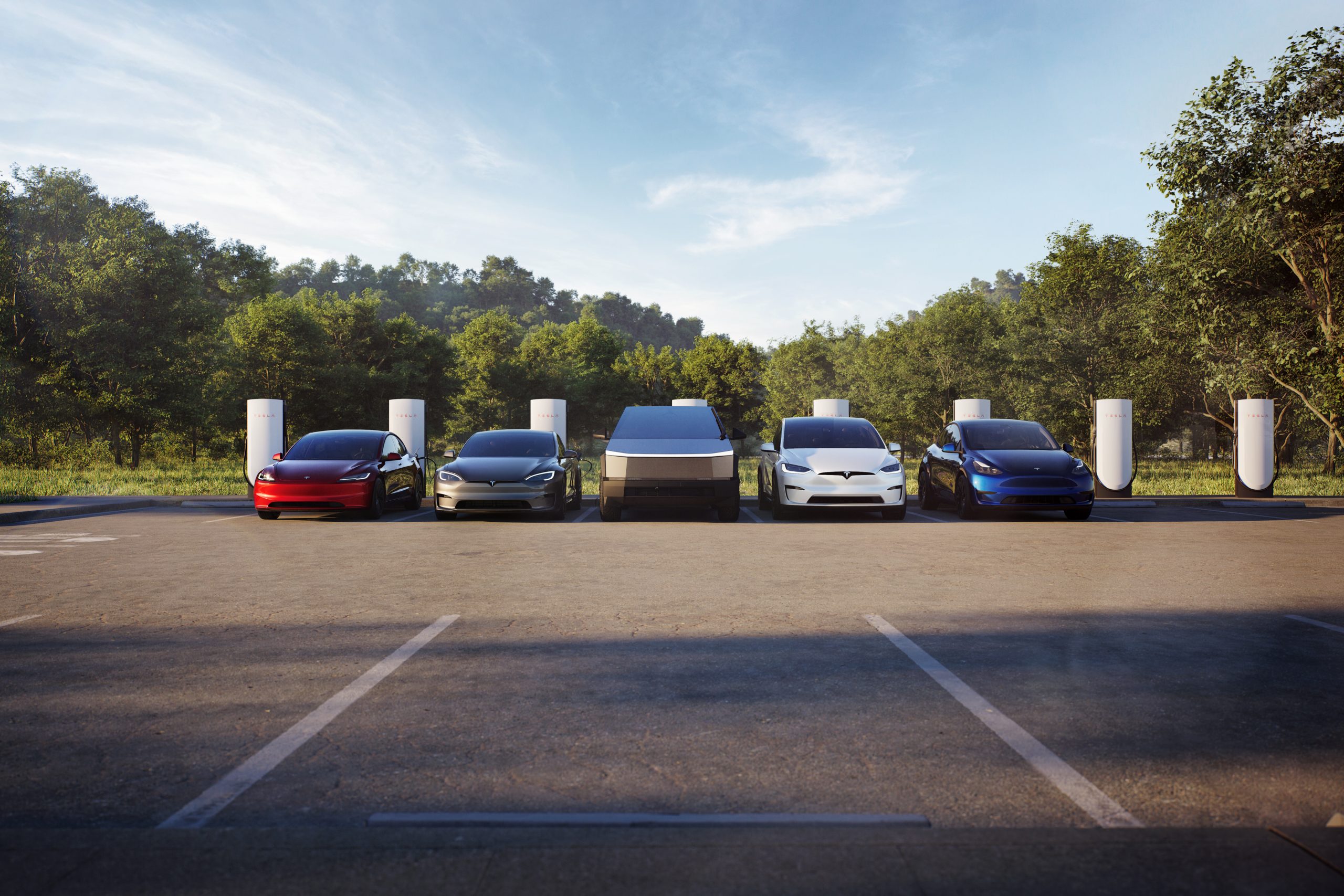
Credit: Tesla
This can boost consumer confidence in Tesla’s long-term ecosystem over competitors retreating to hybrids. With Ford making this move, it is totally reasonable that some car buyers could be reluctant to buy from other legacy automakers.
Profitability is a key reason companies build cars; they’re businesses, and they’re there to make money.
However, Ford’s new strategy could plant a seed in the head of some who plan to buy from companies like General Motors, Stellantis, or others, who could have second thoughts. With this backtrack in EVs, other things, like less education on these specific vehicles to technicians, could make repairs more costly and tougher to schedule.
Potential Increases in Market Share for Large EVs
Interestingly, this could play right into the hands of Tesla fans who have been asking for the company to make a larger EV, specifically a full-size SUV.
Customers seeking large, high-capability electric trucks or SUVs could now look to Tesla for its Cybertruck or potentially a future vehicle release, which the company has hinted at on several occasions this year.
With Ford reallocating resources away from large pure EVs and taking a $19.5 billion charge, Tesla stands to capture a larger slice of the remaining demand in this segment without a major U.S. competitor aggressively pursuing it.








